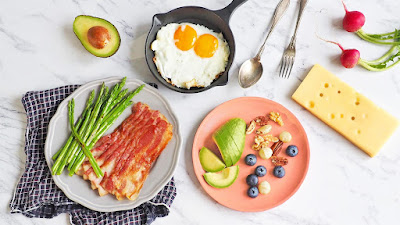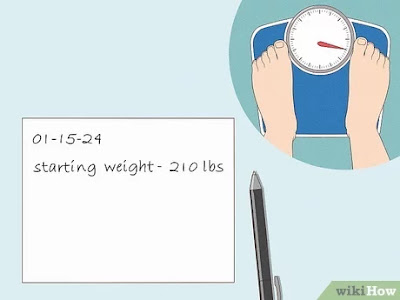The Ketogenic Diet For Weight Loss: Plan for Beginners
The ketogenic diet, often referred to as the keto diet, is a high-fat, low-carbohydrate eating plan designed to induce a state of ketosis in the body. Ketosis is a metabolic state where the body primarily burns fat for fuel instead of carbohydrates. This diet typically involves consuming high amounts of fats, moderate protein, and low carbohydrates.
Reducing carbohydrates forces the body to utilize fat stores for energy, which can lead to weight loss. However, it's essential to approach the ketogenic diet with caution and under the supervision of a healthcare professional, as it may not be suitable for everyone and can have potential side effects.
Ketosis occurs when the body relies on fat for fuel instead of carbohydrates. The typical macronutrient breakdown of a ketogenic diet is around 70-80% fat, 20-25% protein, and 5-10% carbohydrates.
This diet has been used for various purposes including weight loss, managing epilepsy, and improving metabolic health. However, it's important to consult a healthcare professional before starting any new diet plan.
There are several versions of the diet, and what you eat depends on the type.
Standard ketogenic diet: This is a very low-carb, moderate protein, and high-fat diet. It typically contains 70% fat, 20% protein, and only 10% carbs (9Trusted Source).
The cyclical ketogenic diet: This diet involves periods of higher-carb refeeds, such as 5 ketogenic days followed by 2 high-carb days.
Targeted ketogenic diet: This diet allows you to add carbs around workouts.
High protein ketogenic diet: This is similar to a standard diet, but includes more protein. The ratio is often 60% fat, 35% protein, and 5% carbs.
However, only the standard and high-protein ketogenic diets have been studied extensively. Cyclical or targeted diets are more advanced methods and are primarily used by bodybuilders or athletes.
What is Ketosis:
Ketosis is a metabolic state in which your body uses fat for fuel instead of carbs. It occurs when you significantly reduce your consumption of carbohydrates, limiting your body’s supply of glucose (sugar), which is the main source of energy for the cells.
In addition to that, The keto diet is an eating plan that focuses on foods that provide a lot of healthy fats, adequate amounts of protein, and very few carbohydrates. The goal is to get more calories from fat than from carbs. The diet works by depleting the body of its sugar reserves. As a result, it will start to break down fat for energy. This results in the production of molecules called ketones that the body uses for fuel. When the body burns fats, it can also lead to weight loss.
What do you eat on the ketogenic diet?
On a ketogenic diet, you usually eat only 20g to 50g of carbohydrates per day. As an example, 50g of carbohydrates is equal to 2 slices of bread and a banana. Carbohydrates make up about 10% of your daily intake in a ketogenic diet. This means your body breaks down fat for energy and stays in a state of ketosis.
Planning keto
With the right strategy, creating keto meals is easy. The best way is to start by picking a protein source, such as meat, fish, seafood, eggs, or tofu. Then, to complete your meal, choose two low-carb vegetables and add a healthy source of fat.



Comments
Post a Comment